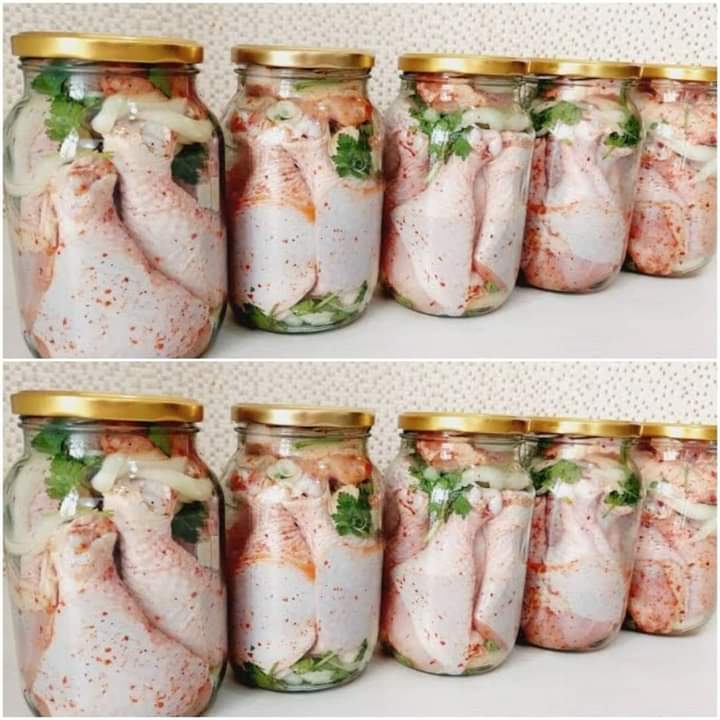Although keeping chicken fresh and safe to eat for up to 12 months is totally achievable with the correct technique, storing chicken without a refrigerator might seem like a difficult chore. This conventional preservation technique guarantees year-round a consistent supply of protein in addition to extending chicken’s shelf life. Let us investigate safe and efficient methods of doing it.
Ingredients and Tools
Updated chicken
Salt with coarse grains
Perfect containers or jars
a space for cold, dry storage
directions
One should get ready the chicken by:
Start by completely washing and trimming the chicken. Eliminate any feathers, innards, and extra weight. Starting with fresh, premium chicken will help to guarantee the greatest outcomes.
2. Salt Fix the Chicken.
Generously sprinkle the chicken with coarse salt, being careful to cover every bit of it—including the cavity. A naturally occurring preservative, salt pulls away moisture and stops bacterial development.
Layer with salt starting at the bottom of an airtight container or jar. Top this layer with the chicken, then cover it whole with additional salt. Make sure the bird lacks any exposed sections.
3. Let It heal:
Seal the container and then keep it in a cold, dry environment. A pantry or cellar suits rather well. Let the chicken cure for four to six weeks minimum. The salt will take away chicken’s moisture, therefore preserving it.
4. Take off and rinse.
Rinse thoroughly: Take the chicken out of the salt after the curing time. To eliminate all the salt, properly rinse it under cold water. Let it dry with a fresh towel.
5. Store Long Term:
Once cleaned and dry, cover the chicken in cheese cloth or parchment paper. Stow it back in an airtight container. Keep it dry and cold. One may keep the chicken for up to twelve months nowadays.
Advice for optimal outcomes
Using premium coarse salt will help to preserve food the best. Steer clear of iodized table salt as it can have ingredients influencing the curing process.
Maintaining a continuous cold and dry climate in the storage space helps to avoid spoiling.
Check the kept chicken often for any signs of spoiling. Discount the chicken if you detect any odd scents or discolouration.
To rehydrate and eliminate too much salt, immerse the preserved chicken in water for several hours or overnight before using it.
Cooking Techniques: For braises, soups, and stews—slow-cooking techniques—salt-cured chicken is superb. After rehydrated, it may also be grilled or roasted.
In essence, conclusion
Without a refrigerator, this classic salt-curing technique allows you to preserve chicken whole and safe for up to 12 months. This method gives the chicken a deep, delicious taste in addition to preservation. Try this approach and appreciate the ease of having year-round preserved chicken accessi
ble. Joyful preservation!
